An In-Depth Comparison of Honda Brio Vs Toyota Wigo
Many drivers are wondering what to choose between the Honda Brio vs Toyota Wigo. If you are dealing with the same deciding-problems, stay tuned for this article!
Honda Brio Vs Toyota Wigo: Introduction
During the past decade, the class A-segment hatchback has become more dynamic when witnessing the rise of the Honda Brio and the Toyota Wigo. This is because both models come from the two biggest Japanese cult brands: Honda & Toyota.
Hopefully, with this comparing article, you can find the most satisfactory and competent interpretation of the battle between Honda Brio vs Toyota Wigo in terms of interior/exterior design, performance, tech & features, and prices.
Let's get into the details with Philcarnews.com right away!
Honda Brio Vs Toyota Wigo: Exterior
Looking at the two rivals' overall design, it is noticeable that the Brio has a more youthful and sporty look. In contrast, Wigo is a bit too safe and pragmatic.
Toyota Wigo has the measures of dimensions (Length x Width x Height) are 3,660 x 1,600 x 1,520 (mm) respectively with the wheelbase reaches 2,455 mm and ground clearance is 160 mm. Thanks to the wheelbase's large size, the Wigo can offer better interior space than some competitors with the same price range.

The Toyota Wigo looks softer and more feminine compared to the Brio.
Meanwhile, the Honda Brio's overall measurements are 157 mm longer, 82 mm wider, and 33 mm lower than the Wigo. Specifically, the car has a wheelbase of 2405 mm; other dimensions are 3801 x 1682 x 1487 mm (length x width x height) and a ground clearance of 154 mm.
The most attractive point of the Toyota Wigo 2020 comes from the refreshed grille system. Hence, the Japanese automaker brings a more youthful steering wheel with a painted chain link design to make the Wigo cooler. Nevertheless, Honda Brio owns a sharp wing-shaped grille with a large chrome-plated crossbar.
The Brio's front lights have a cleaner and sharper shape, but there is no projector lens like the Wigo. Both Honda Brio vs Toyota Wigo 2020 are integrated with LED daytime running lights with standard-Halogen front lights, contributing to the standout of the front end.
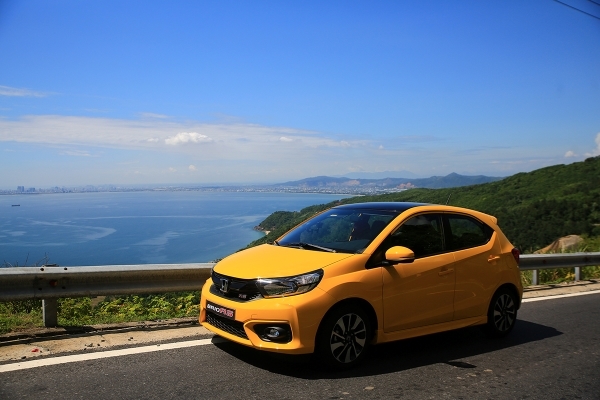
The Honda Brio and an edgy exterior design.
The two competitors have an opposite front-end design. If the Brio owns an angular and masculine face, the Wigo has a gentle and neutral beauty. Therefore, the Honda Brio easily conquers young customers while Toyota targets middle-aged and elderly users.
Honda Brio Vs Toyota Wigo: Interior
The spacious space is the feature that helps the Toyota Wigo score higher points than the Honda Brio.
In the segment, the Wigo is a model owning one of the most spacious parking spaces. So drivers can feel assured when choosing transport services. The front row of the car is fully manual, the rear seats are covered with full 3 headrests while the foldable back-seats can provide better storage capacity.
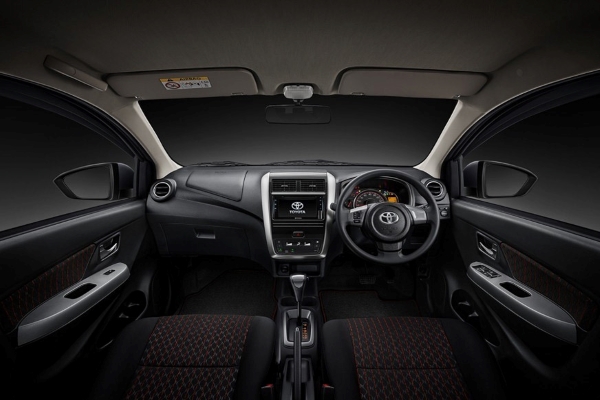
Toyota Wigo's cabin is more spacious than the Honda Brio.
On the other hand, Honda Brio has a slightly smaller passenger seat length, so it can only fit two adults. If there are three people at the back, the cabin space will be a bit cramped and uncomfortable. However, Honda still equips all of its seats with large, soft cushions, and an adjustable tilt angle to ensure commuters get the most comfortable sitting posture.
Regarding the steering wheel design, Toyota has equipped the Wigo with completely plastic. One plus point comes from the volume keys integrated into the wheel and a large speedometer. This makes the steering wheel of the Toyota Wigo is not as empty as the design of some other rival models in the hatchback segment.
Honda Brio 2020 owns a 3-spoke steering wheel with a simple, one-color design. It also provides a 6.2-inch infotainment screen.
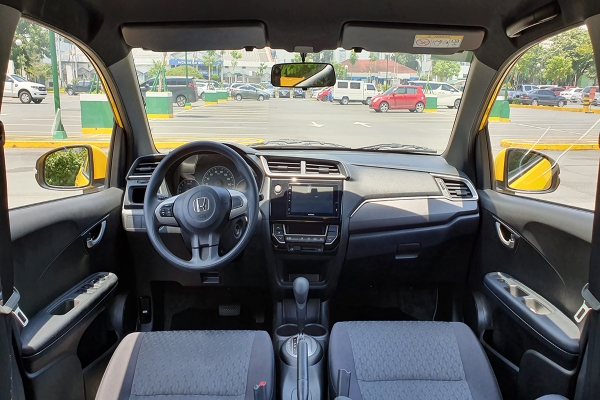
The Brio's steering wheel also has integrated buttons to adjust the sound, just like the Toyota model's.
Both cars come with USB / AUX / Bluetooth connectivity with voice control and smartphone connectivity. The output of the two entertainment systems is a standard 4-speaker stereo.
Honda Brio Vs Toyota Wigo: Engine & Performance
The Toyota Wigo 2020 has a 3NR-VE engine, with a capacity of 1.2L, four cylinders that can power up to 86 hp at 6,000 rpm, and a maximum torque of 107 Nm at 4,200rpm. The engine is combined with a 5-speed manual or 4-speed automatic transmission and front-wheel drive.
Meanwhile, the engine on the Honda Brio is more powerful. It is equipped with a 1.2L i-VTEC inline 4-cylinder engine, producing a maximum power of 89 horsepower at 6,000 rpm and a maximum torque of 110 Nm at 4,800rpm.
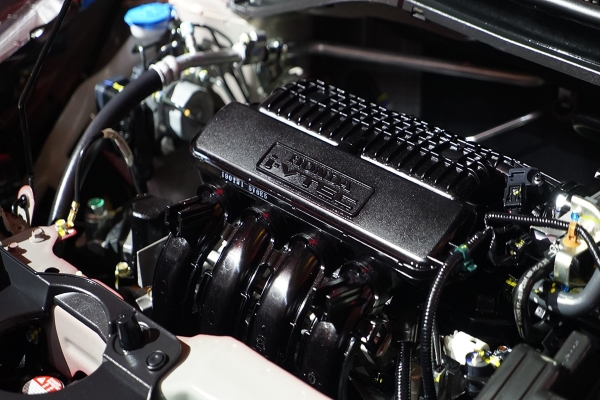
In terms of the engine and performance, it is clearly a big win for the Honda Brio.
Both models are considered great when moving around the city streets as they are all electrically assisted. However, for class A cars, soundproofing is still limited. Therefore, both Toyota Wigo vs Honda Brio is a bit noisy and unstable when operating at high speed.
Honda Brio Vs Toyota Wigo: Safety Features
Both the Wigo and the Brio are equipped with two airbags, anti-lock braking system. The Brio RS variant is extremely diverse in its safety system electronic brake force distribution, automatic door lock mode, and the feature reminding the driver to install the seat belt.
The Honda model also goes with the chassis absorbs force that is compatible with ACE collision and G-CON technology, allowing the body and chassis to absorb the impact force when a crash occurs. Meanwhile, the Toyota Wigo only has parking sensors and a neck injury reduction feature.
Honda Brio Vs Toyota Wigo: Variants & Prices
Here are the lists of variants and prices of the Honda Brio vs Wigo in the Philippines for you to take more careful consideration.
Honda Brio Vs Toyota Wigo: Conclusion
In the A-segment hatchback, both Honda Brio and Toyota Wigo converge the attractions that people can hardly find in other cars within the same price range.

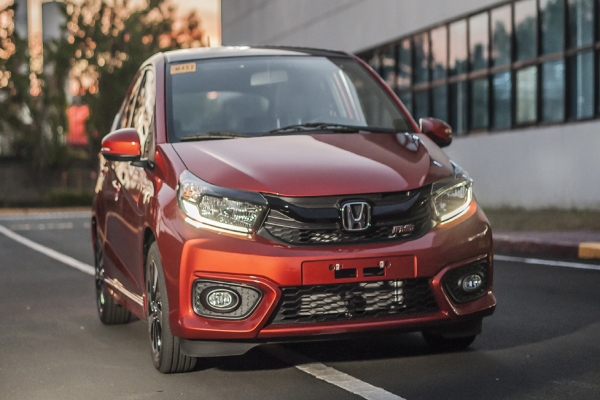
The models' trendy design, the various features, and the affordable prices will remain iconic in the car manufacturing industry history.
We hope that with this article, you can have a more throughout understanding of the Honda Brio vs Toyota Wigo battle in different aspects. Thank you for reading! See you next time!
>>> Check out our Car Tips and Advice section for more updated useful notices on car purchasing and maintenance!
RECENT ARTICLES









